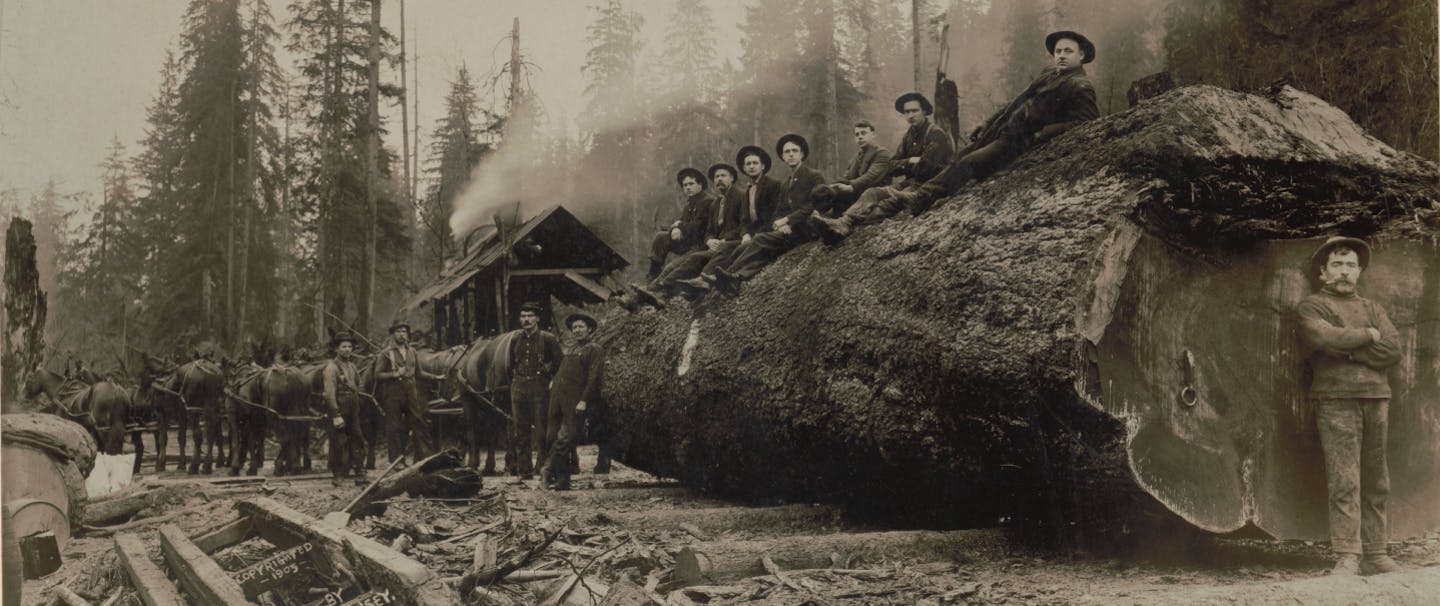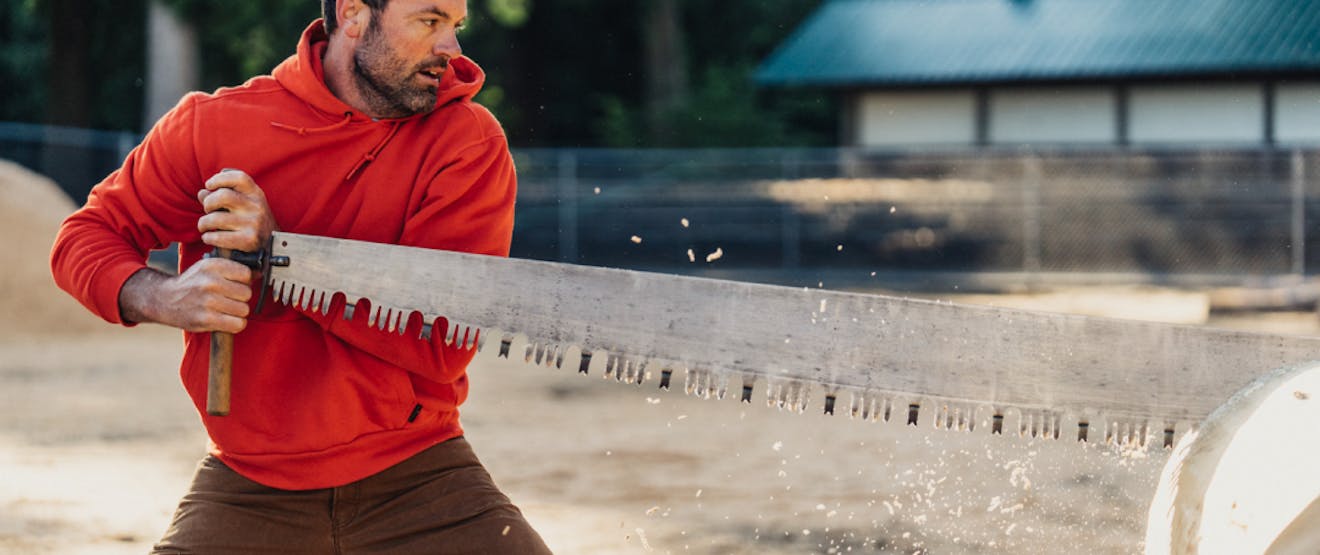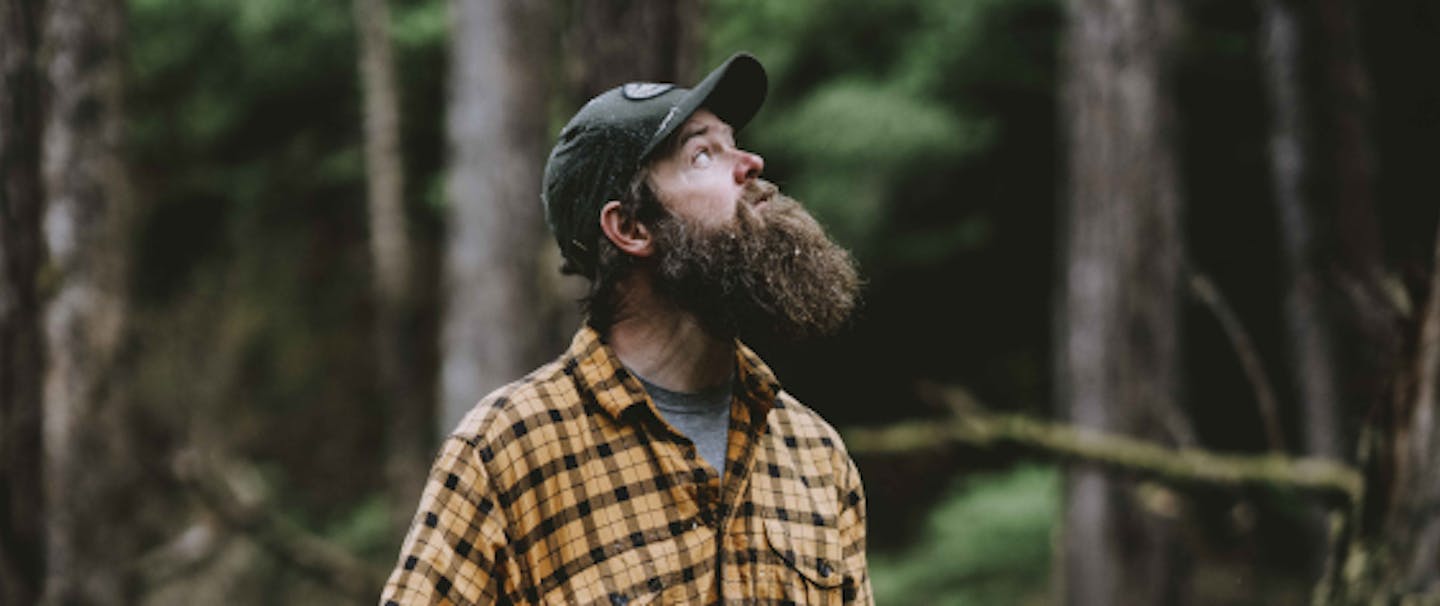
DOWN
1. Haulback: A cable line used to pull cut trees down from the fell site.
2. Bight: Stay out of this when logging, to avoid danger.
3. Flume: Wooden trough with water flowing through it, used to transport cut logs down to rivers and splash ponds where they were collected and assembled into log rafts for transport to the sawmill.
4. Side Hill Salmon: Lumberjack slang term for deer.
5. Greenhorn: An inexperienced logger, often either young or new to logging.
6. Springboard: A long, wooden board that loggers would stick into a notch in a tree several feet above the ground, to stand on while cutting the tree with a saw or ax.
9. Rigger: Name for a lumberjack who would hang pully blocks and set guy wires between the spar and tail trees for hauling out logs.
17. Short Stake: Transient lumberjacks newly arrived to a logging camp, or temporary only.
19. File Shop – Logging camp place where axes and saws were sharpened by hand.
18. Bucker: Name for a lumberjack who would follow the felled trees and cut the logs in lengths of 40 feet. Also known as a “sawyer”.
20. Crosscut Saw – Type of long, metal saw used to cut down trees.
21. Stump Farm – Land that has been logged off and settled by pioneers to establish a farm or homestead.
ACROSS
7. Timber Cruiser: A logger who scouts ahead, to identify and mark stands of timber for harvesting by other loggers. This was a prominent job to have in a logging camp. Also the name of a traditional tin cloth, waterproof jacket worn by many lumberjacks.
8. Choker: Loggers use these hooks to secure logs with cable, so the logs can be hauled down the mountainside.
10. Whistle Punk: Lumberjack job assigned to keep the Donkey Engine working and feeding its boilers.
11. Log Dog: Also called Rafting Dog, this is a spike with a round hole at the end, used to secure logs together into rafts with cable threaded through the ends. Also describes a tool used to hold logs in position for scribing, notching or similar work.
12. Virgin Forest: Trees and woodlands that have never been cut down before, with lots of old growth stands of timber.
13. Douglas Fir: A plentiful and popular Pacific Northwest type of evergreen tree harvested by loggers.
14. Spar: Tall trees that were topped by lumberjacks with climbing gear, then used to secure choker cables at the cutting end for hauling cut timber out of the forest.
15. Nosebag: Slang lumberjack term for a sack lunch.
16. Bunkhouse: Place where loggers slept and spent off-hours when not working.
20. Chopper: Name for a lumberjack who cuts niches in trees, whatever side he wishes to fell them. Also severs tree limbs from felled trees.
21. Skid Trail: Path where the logs are hauled out of the woods.
22. Undercut: A type of cut made with an ax, in order to fell a tree.
23. Swedish Fiddle: Nickname given to a two-handed saw used for felling trees. The term alludes to the many lumberjacks who were Scandinavian immigrants.
24. Skidder: Name of a lumberjack responsible for building the skidway, or skid road, where the logs are taken out.
25. Ax: Logging tool used by lumberjacks to make the first cuts, when cutting down (felling) trees. Also used to remove tree limbs.


